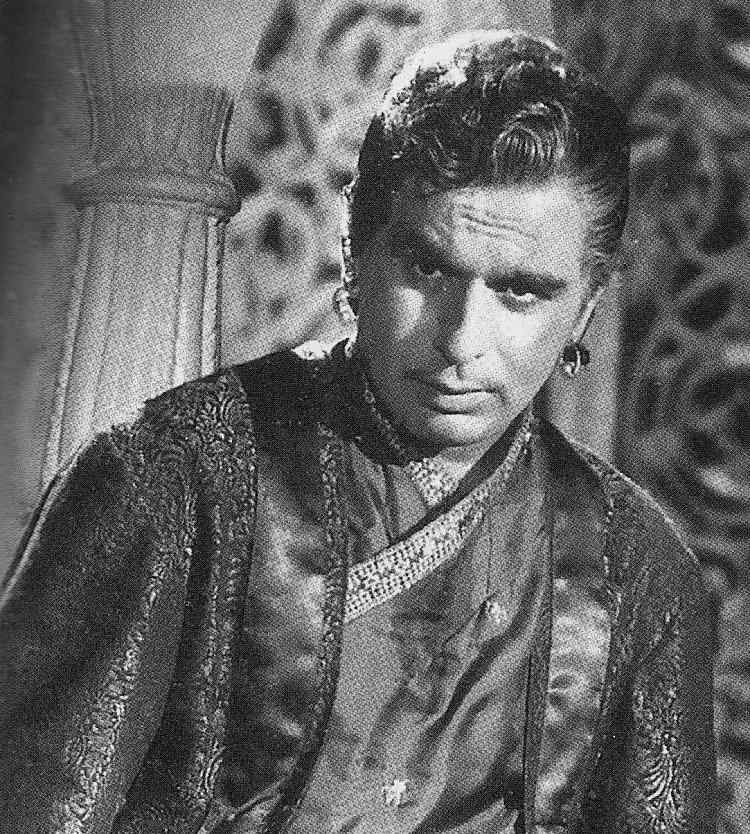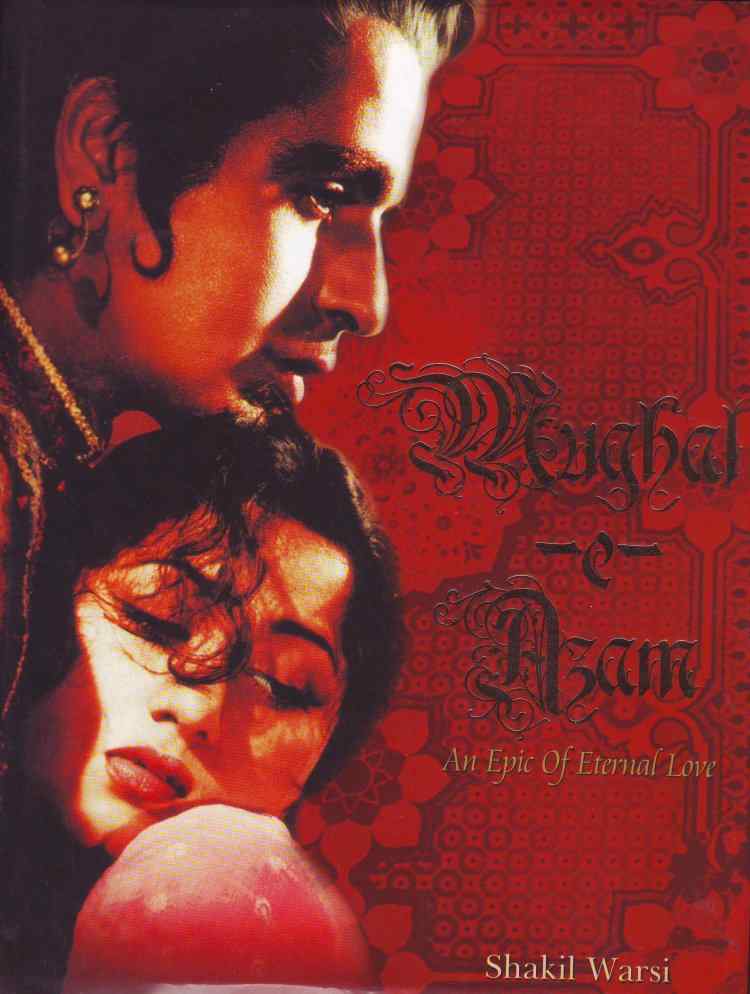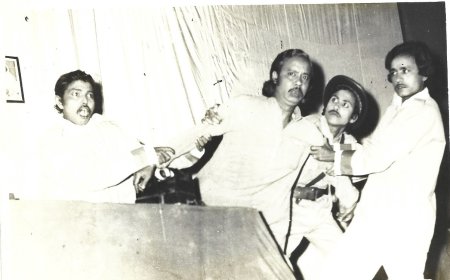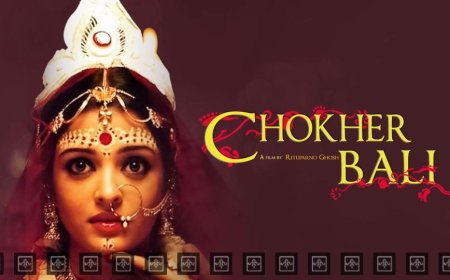TRIBUTE TO K. ASIF ON HIS CENTENARY SOME NOSTALGIA ON MUGHAL-E-AZAM (1922 – 2022)
Shoma A. Chatterji tributes on K. Asif whose centenary falls this year and on his classic film 'MUGHAL-E-AZAM'.

Isn’t it a strange coincidence that K. Asif, who made perhaps the most outstanding historical fiction in the long history of Indian cinema and the hero in this magnum opus, Dilip Kumar, share their centenaries in the same year? Mughal-e-Azam, the film, can be chalked out in an entire book and in the same manner, the making of the film can become the subject of another book, such is the life story of Mughal-e-Azam and its maker K. Asif. The 28th Kolkata International Film Festival being held right now has scheduled a screening of the film as tributes to both K.Asif and Dilip Kumar as both performers are celebrating 100 years this year.
A fascinating story of historical fiction on the love of Mughal prince Saleem for a court dancer Anarkali in spite of strong opposition from his father Emperor Akbar, Mughal-e-Azam became a cinematic classic. Glamorous, lavishly mounted, with outstanding music by Naushad, a stellar acting cast with outstanding performances, the film has encrusted its name in the historical annals of Indian cinema. Set in the 16th century AD, Mughal-e-Azam brings to life the tale of the doomed love affair between the Mughal Crown Prince Saleem and the beautiful, ill-fated court dancer, whose fervour and intensity perpetrates a war between the prince and his father, the great Mughal Emperor Akbar, and threatens to bring an empire to its knees.
According to historians and scholars of Mughal history, Anarkali is a fictional character that did not exist. Noted art historian R. Nath has argued that Jehangir had no wife called Anarkali to whom the Emperor could have built a tomb. There is no evidence that Prince Saleem ever fell in love with the courtesan, and no reference to her in Saleem's autobiography. Whether Anarkali is pure fiction or based on historical fact, her legend has mesmerized the people of South Asia. She has caught the eye of nearly every big name in the arts in South Asia for the past 100 years. Anarkali and Mughal-e-Azam were major hits in Pakistan and India. Playwright Syed Imtiaz Ali Taj’s version for the stage is considered a masterpiece. Abdur Rehman Chughtai’s rendition of Anarkali which was used as a cover for Taj’s play is one of the most famous paintings of the courtesan. But according to historians and historical fact, she did not exist, ever.
Who was K.Asif? His name was Kareemuddin Asif but he is known across the history of Indian cinema as K. Asif who carved his name with just among the few films he had made over his long career. . Asif was born in Etawah in Uttar Pradesh in 1922 to a respectable, educated Muslim family. He was least interested in education and dropped out of school. However, his mastery over the Urdu language and literature was amazing. He later found a colleague and friend in Kamal Amrohi who shared his lack of education and mastery over Urdu. His maternal uncle, Nazir Ahmed Khan, already in films, helped him get a job as a tailor as his family had a background in tailoring. But Asif was least interested in the job.
Nazir Ahmed Khan was already a successful producer, director and actor in Bombay. He saw the talent and dedication to his nephew and asked him to direct his next production, Society. But he was dropped later on. Asif’s maiden film Phool in 1945 was produced by his friend Kamal Amrohi. Phool was a big-budget film starring Suraiya, Durga Khote, and Prithviraj for which Kamal Amrohi wrote the dialogue. Phool did fairly well and established Asif as a talented director who was a perfectionist. He would actually act out a scene for every actor before the camera rolled.
His second film Hulchul (1951) was directed by S. K. Ojha and written by Hasrat Jaipuri. He co-produced it with a couple of friends. The film starred Dilip Kumar, Nargis along with K. N. Singh, Balraj Sahni, Sitara Devi, Jeevan and Yakub.
Shakil Warsi, a noted personality in theatre and television, has written 'Mughal-e-Azam—an epic of eternal love'. The lavishly mounted book is a tribute to everyone involved in the making of the film and its positioning within historical, period films and costume dramas in Hindi cinema.
For the battle scenes, Asif used 2000 camels, 4000 horses and 8000 soldiers. Most of the soldiers were taken on loan from the Jaipur Regiment of the Indian Army. Tailors were brought from Delhi for the costumes. Specialists from Surat were hired for the embroidery, goldsmiths from Hyderabad designed the jewellery, craftsmen from Kolhapur worked on the crowns, ironsmiths from Rajasthan made the weaponry and shoemakers from Agra produced the footwear.
The fascinating sheesh mahal was fashioned out of glass, especially imported from Belgium at a premium of Rs. 15 lakhs. But the hundreds of small mirrors created problems for the cinematographer so they were covered with a layer of wax. When that too failed, specialists were called in from London to rectify matter. It was a replica of the Sheesh Mahal of the Lahore Fort. The climax of the film was done in colour. Despite experts predicting a flop, the film turned out to be one of the ten biggest hits in Indian cinema in the 20th century.
Naushad’s outstanding musical score remains one of the all-time highlights of the film. From Mohe panghat pe through Mohabbat ki jhooti, Bekas pe karam keejeye to Pyar kiya to darna kya, the music, the rendering apart, the positioning of the songs within the cinematic narrative, its orchestration, choreography and performance were so aesthetically conceived and executed that they remain milestones in Hindi film music. Ustad Bade Ghulam Ali Khan sang two songs for the film, lending his voice to Tansen’s character. Warsi informs that Ustadji charged Rs.25,000 for each song when Lata Mangeshkar and Mohammed Rafi were paid Rs. 400 per song.
The lyrics by Shakeel Badayuni have also been immortalised and most of the songs rendered by Lata Mangeshkar have been one additional feature to her wonderfully feathered cap. The film had 12 songs and could easily blend into the genre of musical films but its historical foundation made it a film based on “history” while the lavish production values and the period dating made it a costume drama and thus, overlapping several genres of cinema.
Shakil Warsi, a noted personality in theatre and television, has written 'Mughal-e-Azam—an epic of eternal love.' The lavishly mounted book is a tribute to everyone involved in the making of the film rather than a critical analysis of the film and its positioning within historicals, period films and costume dramas within Hindi cinema. A lengthy introduction running into 31 pages gives “An Overview of Historical Films.” But it is more a database of information designed as text rather than an analysis of some of the prominent films. However, he pertinently states that it is difficult to differentiate historical from period costume dramas.
Mahesh Bhatt finds the love scene between Dilip Kumar and Madhubala the best in Hindi cinema. “Shot in extreme close-up, the scene in which Dilip Kumar tickles the passionate face of Madhubala with a white feather is perhaps the most sensitively portrayed erotic scene on the Indian screen,” he says.
The digitalised and colored version of this magnum opus with Dolby sound made by Sankranti Creations, released in 2004 failed to attract even a handful of viewers.
After Mughal-e-Azam, Asif had begun another magnum opus, Love and God starring Guru Dutt and Nimmi under terrible financial constraints. But Guru Dutt died in October 1964. Sanjeev Kumar replaced him but the film was doomed as Asif passed away on March 9, 1971, reduced to penury. A tragic end to a man who became history.

***
About the author: Dr. Shoma A.Chatterji is an Indian film scholar and author based in Kolkata.
What's Your Reaction?


































































